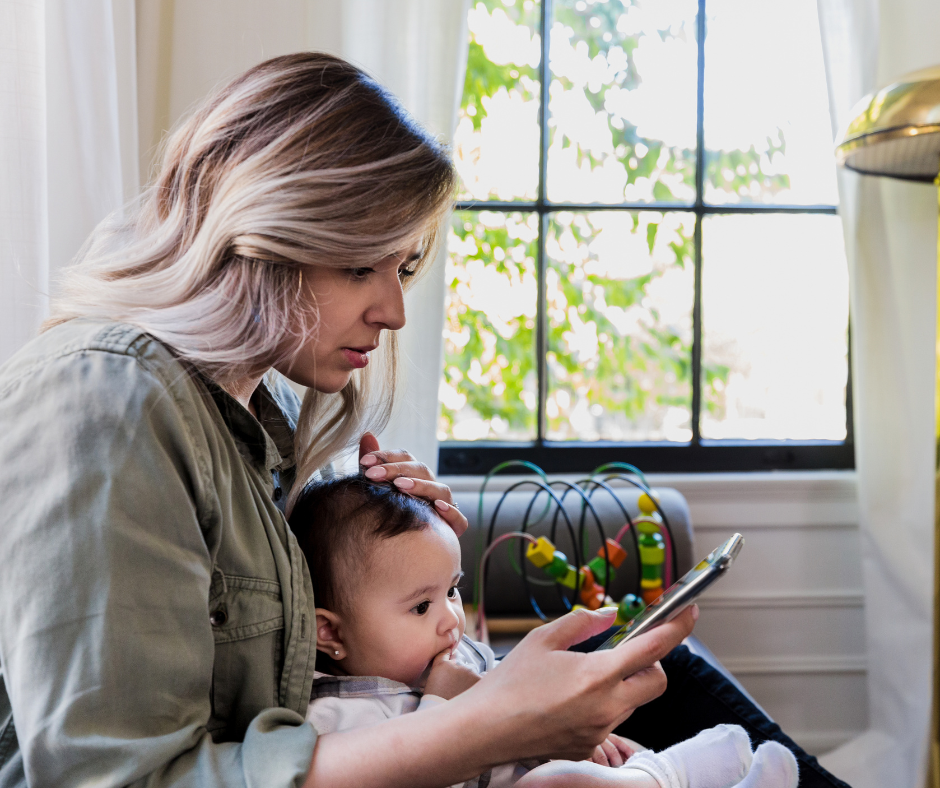

Is Micro Learning the Antidote to Doom Scrolling?
Summary
“Doom scrolling” has become a prevalent habit leading to anxiety and unproductivity. Microlearning, which offers short, focused learning segments, presents a potential antidote. This article explores how female creative entrepreneurs can replace doom scrolling with microlearning, fostering focused engagement with digital media and boosting knowledge retention.
Reflection Questions
- How does doom scrolling impact your daily routine and overall well-being? Reflect on the emotions and behaviors triggered by constantly consuming negative news and information on social media platforms.
- Consider the challenges and pressures faced by female creative entrepreneurs, who often juggle multiple roles and responsibilities. How does doom scrolling exacerbate these challenges, and what strategies can you implement to mitigate its effects?
- Reflect on your current learning habits and preferences. Do you find traditional learning modules overwhelming or difficult to engage with? How might microlearning offer a more accessible and effective alternative for busy women entrepreneurs?
Journal Prompt
Reflect on the concept of mindfulness and its relevance to your digital consumption habits. How can cultivating awareness and intentionality in your media consumption habits help you resist the temptation of doom scrolling and prioritize more meaningful and productive activities?
It’s no secret that ‘doom scrolling’—the tendency to continuously scroll through negative news and information, which can lead to feelings of anxiety and unproductivity—occupies much of our down time. Is your attention easily diverted from meditation, reading, and other positive pursuits toward doom scrolling on your phone or tablet? Would you prefer to learn instead of endlessly swiping through Instagram or TikTok? Micro learning, an educational approach characterized by short, focused learning segments, might be the solution. This methodology contrasts the sprawling, often overwhelming nature of traditional learning modules by distilling content into concise, digestible units. In this article, we examine how female creative entrepreneurs, who often juggle multiple roles and face unique challenges, can replace endless doom scrolling with microlearning content, thereby fostering a more focused and productive engagement with digital media. Read on to learn more about how microlearning course engage learners and boost knowledge retention.
Understanding Microlearning


Micro learning is a strategic approach to instruction that delivers content in small, targeted units, usually designed to be completed in a short amount of time, such as five to ten minutes. These units are self-contained, focusing on a single objective or outcome, which makes them ideal for reinforcing concepts or skills.
The characteristic brevity of micro learning allows for focused, specific content delivery, making it an effective method for busy learners or those with limited attention spans. This approach stands in contrast to more traditional, lengthy instructional methods, offering a streamlined and direct learning experience.
Contrast with Traditional Learning Method


Traditional learning methods typically involve comprehensive, longer-duration courses that cover broad topics, often requiring extended periods of focus and study. This approach can be seen in standard academic settings or professional training courses where a single session may last several hours and cover multiple topics or skills.
In contrast, micro learning breaks down these broader subjects into more manageable, bite-sized pieces. This segmentation allows learners to quickly absorb and apply specific skills or knowledge without the time investment required by traditional learning models. Furthermore, the modular nature of microlearning facilitates just-in-time learning, where individuals can access specific information exactly when they need it.
Microlearning Examples


Microlearning involves breaking down complex information into smaller, more manageable segments, making it easier for learners to absorb and retain knowledge. We often think of an organization’s microlearning strategy (including skills training, compliance training, etc.) but there are many other applications of microlearning outside of employee training. Below are some common, casual examples of microlearning. Each of these examples leverages the core principles of microlearning—brevity, focus, and specific learning outcomes—to create an effective and engaging learning experience.
Short Instructional Videos: Brief videos, often ranging from 1 to 5 minutes, focusing on a single concept or skill. For instance, a video tutorial on how to create a pivot table in Excel.
Interactive eLearning Modules: Short, interactive online courses or modules covering a specific topic. These may include elements like quizzes, interactive diagrams, or drag-and-drop activities to engage the learner.
Infographics: Visually appealing and concise, infographics are used to summarize complex data or concepts in an easily digestible format. They’re particularly effective for visual learners.
Flashcards: Digital or physical cards used for learning and memorizing concepts, terms, or definitions. Flashcards are a popular tool for language learning, memorizing medical terms, etc.
Fuel your creative fire & be a part of a supportive community that values how you love to live.
subscribe to our newsletter
*please check your Spam folder for the latest DesignDash Magazine issue immediately after subscription


Podcasts or Audio Clips: Short audio recordings focusing on specific topics. These can be particularly useful for learners who prefer auditory learning or for learning on the go.
Quizzes and Mini-Assessments: Brief quizzes or assessments that provide immediate feedback. These are useful for reinforcing learning and assessing understanding of a topic.
Learning Games: Gamified learning experiences, which might include elements like points, levels, or badges, centered around specific learning objectives.
Checklists or Job Aids: Quick-reference guides or checklists that provide step-by-step instructions or important points about a task or process. These are often used in workplace settings.
Social Media Posts: Educational content delivered through social media platforms. This can include tips, facts, or thought-provoking questions posted on platforms like Twitter, LinkedIn, or Instagram.
Short Readings or Blog Posts: Concise articles or blog posts focused on a single topic, offering an in-depth look at a concept in a brief format.
Evolution and Popularity in the Digital Age


Microlearning focuses our attention for short periods of time, which is especially important in our digital age when so much lobbies for our attention during each waking moment. The rise of micro learning can be closely tied to the advent of digital technology and the changing patterns of media consumption.
In the digital era, where information is abundant and attention spans are challenged, micro learning aligns with the quick, flexible style of content consumption preferred by many. Mobile devices and online platforms have made it easier to deliver and access micro learning modules. Mobile learning allows users to engage with content anywhere and anytime.
This adaptability has made microlearning videos, courses, and apps particularly appealing in corporate training and professional development, where they can be seamlessly integrated into the busy schedules of employees. Additionally, the compatibility of microlearning courses with gamification and interactive media has further boosted their appeal, offering engaging and motivating ways for learners to reinforce knowledge and invest in skill development at their own pace.
Exploring the Benefits of Microlearning


Micro learning offers improved retention by delivering content in short, focused segments that align with the human brain’s attention span and memory processing capabilities. This method allows learners to quickly absorb and recall information.
The flexibility of micro learning is another significant benefit; learners can engage with content at their convenience, fitting learning into various parts of their daily schedule. This adaptability makes it particularly suitable for diverse lifestyles and learning needs. Additionally, the accessibility of micro learning is enhanced through digital platforms, allowing learners to access content from anywhere, further removing barriers to education and skill development.
Microlearning Research: Studies on the Benefits of Microlearning
One notable study conducted at the University of Southern Queensland (USQ) focused on implementing micro-learning principles in their courses. This approach involved breaking down course materials into smaller, more manageable “bite-sized” units, which helped to reduce cognitive overload and make learning materials less daunting for students.
The results of this trial showed increased student engagement and satisfaction, as well as improved performance in assessments. This study supports the efficacy of micro-learning in enhancing the learning experience by making content more accessible and manageable for students. For more detailed information, please refer to Emerald Insight’s article on “Trialling micro-learning design to increase engagement in online courses,” which details the study’s results.
Continuous Personal and Professional Development


Micro learning facilitates continuous personal and professional development by enabling learners to consistently update and expand their skill set in response to evolving industry trends and personal interests. This ongoing learning process is crucial in today’s fast-paced world, where staying current with new skills and knowledge is essential for career advancement and personal growth. Micro learning’s bite-sized format is conducive to lifelong learning, as it allows for the easy incorporation of new learning opportunities without overwhelming the learner.
Long-term Impacts on Creativity and Innovation
In the long term, micro learning can have a profound impact on creativity and innovation. By continuously exposing learners to new ideas and skills in manageable portions, micro learning encourages the constant expansion of knowledge and perspective.
This broadened outlook can stimulate creative thinking and problem-solving skills, fostering innovation. The diverse range of topics and skills covered in micro learning can also lead to cross-pollination of ideas between different fields, further enhancing creative capabilities and the potential for innovative breakthroughs.
Doom Scrolling: A Modern Dilemma


Doom scrolling refers to the act of continuously scrolling through bad news on social media and news websites, often leading to increased feelings of sadness, anxiety, and negativity. This behavior, driven by the human tendency to seek out negative information, known as the negativity bias, has significant implications for mental health and productivity.
Prolonged exposure to distressing news can lead to heightened stress levels, disrupted sleep patterns, and reduced overall well-being. Moreover, the time and mental energy consumed by doom scrolling can detract from productivity, as individuals may find themselves preoccupied with negative news instead of engaging in more constructive activities.
Studies on the Negative Impacts of Doom Scrolling
There are several real studies that have investigated the phenomenon of doom scrolling. For example, a study conducted by the University of Florida, published in the American Psychological Association’s Technology, Mind, and Behavior journal, explored doom scrolling as a unique behavior. This research was focused on understanding doom scrolling as more than just a modern trend, but rather as a compulsive behavior driven by a desire to stay informed, particularly regarding negative news. The study also developed a technique to measure doom scrolling, providing a foundation for future research in this area.
Another study referenced in Psychology Today discussed the role of bad news in social media and advertising. While these studies were primarily conducted in the context of advertising, they offer insights into how bad news affects social media behavior and the psychological mechanisms behind the compulsion to engage with negative content.
Additionally, a 2021 study published in the journal PLOS One found that exposure to positive or heartwarming news did not lead to the same negative emotional consequences as bad news related to COVID-19. This indicates a potential strategy for mitigating the negative impacts of doom scrolling by balancing the intake of negative news with more positive content.
Exacerbation During the Pandemic and Increased Digital Consumption
The COVID-19 pandemic has significantly intensified the issue of doom scrolling. As people turned to digital platforms for news and social interaction during lockdowns and social distancing, their exposure to negative news increased.
The pandemic’s inherent uncertainty and seriousness further fueled a continuous search for updates, leading to excessive consumption of distressing information. This phenomenon was compounded by the increase in digital consumption overall, with individuals spending more time on their devices for both work and leisure, providing more opportunities for doom scrolling.
Psychological Aspects of Doom Scrolling
The psychological basis for doom scrolling lies in the human brain’s natural inclination to prioritize negative information as a survival mechanism. This negativity bias makes us more sensitive to bad news, as it was evolutionarily advantageous to be alert to potential threats.
Additionally, there is a paradoxical aspect where negative news can be compelling, even as it causes distress. The desire for certainty and understanding in uncertain times can also drive people to continuously seek out news, hoping to find answers or some sense of control amidst chaos. However, this often leads to a cycle of anxiety, as the more one scrolls, the more negativity they are exposed to, perpetuating the psychological impact.
Micro Learning as an Antidote to Doom Scrolling


Micro learning, with its concise and focused learning sessions, offers a practical solution to counteract the effects of doom scrolling. By providing brief yet comprehensive learning units, it helps redirect attention from negative news consumption to constructive knowledge acquisition.
This shift not only reduces the time spent on unproductive media scrolling but also actively engages the mind in positive and purposeful learning activities. Micro learning’s structured approach can help break the continuous cycle of negative information consumption, offering a more productive and mentally healthy alternative.
Benefits of Short, Focused Microlearning Modules
Short, focused learning sessions, a hallmark of micro learning, bring several benefits. These short bursts cater to the modern learner’s shorter attention span, making it easier to retain information and keep learners engaged. Accessed on microlearning apps and other platforms, these bite-sized learning chunks are designed to fit into busy schedules, allowing learners to absorb knowledge without the time commitment required for longer sessions.
This format is particularly effective for complex subjects, breaking them down into manageable pieces that are easier to understand and remember. Furthermore, the immediate application of these small learning units helps reinforce the concepts, enhancing overall learning effectiveness.
Engagement and Reduced Overwhelm in Micro Learning
Compared to prolonged media consumption, which can lead to information overload and fatigue, micro learning offers a more engaging and less overwhelming experience. By focusing on one concept at a time, learners are not bombarded with excessive information, reducing cognitive overload.
This method often incorporates interactive elements such as quizzes, short videos, and gamification, which not only make learning more enjoyable but also increase engagement. Additionally, the flexibility to learn at one’s own pace and choose topics of interest tailors the learning experience to individual preferences, further enhancing engagement and reducing the sense of being overwhelmed.
Microlearning for Women in Creative Fields


Women creative entrepreneurs in the digital landscape face a unique set of challenges and needs. Balancing the demands of entrepreneurship with personal commitments often leaves limited time for traditional educational pursuits.
Additionally, they frequently encounter the challenge of keeping up with rapidly evolving digital technologies and market trends. The need for continuous learning and skill upgrading is paramount in staying competitive and innovative. Moreover, as creatives, they require learning resources that not only provide technical knowledge but also inspire and stimulate their creativity.
Micro Learning’s Benefits for Women Creative Entrepreneurs
Micro learning is particularly well-suited to meet the needs of women creative entrepreneurs. Its flexibility allows learning to be seamlessly integrated into their often irregular and hectic schedules. The concise, focused nature of micro learning means that they can quickly acquire specific skills or knowledge relevant to their immediate needs, without the commitment required for longer courses.
This can be especially beneficial in areas where they need to quickly adapt to new technologies or market trends. Furthermore, the varied formats of micro learning, such as videos, podcasts, and interactive modules, cater to different learning styles and can stimulate creativity.
Optimal Times for Pursuing Micro Learning


Women creative entrepreneurs can pursue micro learning at various opportune moments throughout their day. Short learning sessions can be fitted in between meetings, during brief pauses before appointments, or in moments of creative blocks where a burst of learning might provide the needed inspiration.
Instead of resorting to doom scrolling late at night, they can engage in micro learning sessions that are not only productive but also conducive to their professional growth and personal well-being. This flexibility makes micro learning an ideal educational tool for women entrepreneurs who need to balance their professional aspirations with personal commitments.
Harnessing Micro Learning: Practical Tips


Integrating micro learning into daily routines can be achieved through deliberate planning and the use of available time slots. Start by identifying brief periods throughout the day that are typically underutilized, such as during commutes, coffee breaks, or the time before meetings. Use these intervals for micro learning sessions.
Setting specific goals for each session helps maintain focus and ensures that the learning is aligned with broader personal or professional objectives. Additionally, practicing regularity in learning, even if for just a few minutes a day, can greatly enhance knowledge retention and skill development.
Tools, Apps, and Resources for Micro Learning
Various tools, apps, and resources are available to facilitate micro learning. Platforms like Coursera, Udemy, and Khan Academy offer courses broken down into smaller segments, ideal for micro learning. Apps such as Duolingo for language learning or Codecademy for coding skills provide bite-sized lessons tailored to quick learning.
Podcasts on specific topics can also be an excellent resource for learning on the go. Additionally, platforms like YouTube have a plethora of short instructional videos covering a vast range of topics. Utilizing these resources effectively requires selecting content that is relevant and aligning it with your learning goals.
Creating Effective Micro Learning Content to Improve Knowledge Retention
When creating micro learning content, focus on clarity and brevity without sacrificing depth. Start by identifying a specific learning objective for each module and ensure all content directly contributes to this goal.
Use engaging microlearning platforms and tools like interactive quizzes, infographics, or short videos to maintain learner interest. It’s important to structure the content logically, with a clear beginning, middle, and end. Also, incorporating real-life examples can enhance the relatability and practicality of the content. Remember to solicit feedback and refine the content based on learner responses to ensure it remains effective and relevant.
Final Thoughts on Swapping Doom Scrolling with Microlearning


Micro learning, with its concise, focused, and accessible learning units, stands as an effective solution for enhancing knowledge retention, providing flexibility in learning, and fostering continuous personal and professional development. It is especially pertinent for women creative entrepreneurs who face unique challenges in the digital landscape. By incorporating micro learning into their routines, they can not only mitigate the negative effects of doom scrolling but also actively engage in meaningful skill enhancement and creative stimulation. We hope our readers will consider micro learning as a valuable tool for growth and lifelong learning, and embrace this approach for its potential to foster creativity and innovation in the long term.
Design Dash
Join us in designing a life you love.
-
The Friendship Breakup: How to Let Go of Toxic Relationships Gracefully
A friendship breakup can be so much harder than a romantic breakup. Learn how to navigate the grief, set boundaries, and rebuild.
-
Designing a Morning Routine Based on Your Chronotype (And Why It Works)
Learn how to align with your natural energy patterns and transform your mornings by creating a routine tailored to your chronotype.
-
Why ‘Ghosting’ at Work Won’t Work: How to Gracefully Decline Social Invitations
Instead of ghosting at work, learn how to gracefully say no, set boundaries, and maintain professional connections without burning out.
-
The Joy of Missing Out: How to Embrace JOMO and Reclaim Your Time
The Joy of Missing Out (JOMO) can help you reclaim your time! Learn how to prioritize what matters, embrace intentional living, and balance your busy life with actionable tips for both personal and professional well-being.
-
Why Everyone Should Consider Couples Therapy—Even When Things Seem Fine
Strengthen your relationship with couples therapy—even when things seem fine. Therapy can improve communication and deepen connection.
-
End-of-the-Year Reflection Questions Before 2025: What Worked & What Didn’t
Let’s work through end-of-the-year reflection questions—celebrating what worked, recognizing what didn’t, and setting intentions for 2025.








